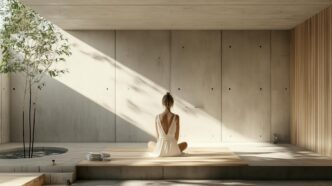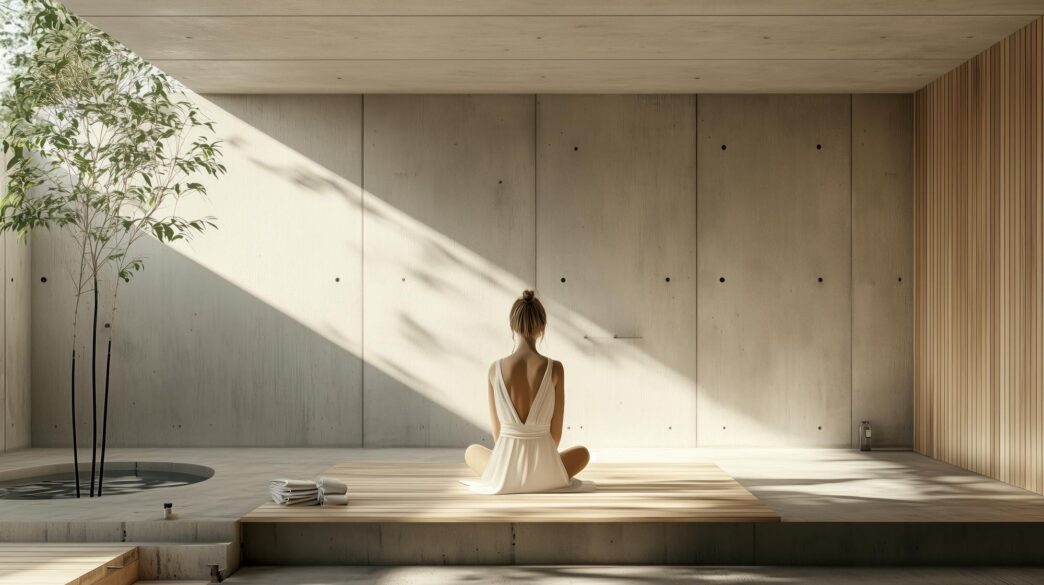A Quick Takeaway
The Story Behind the Trend
How to Make It Work for You
The Community View
Anyone can transform a corner of their home into a peaceful yoga sanctuary, creating a dedicated space for mindful movement and meditation right where they live. This personal oasis, often simple and uncluttered, provides a consistent environment to deepen one’s practice, reduce stress, and cultivate inner peace without the need to travel to a studio. By intentionally designing a space that appeals to your senses and supports your practice, you empower yourself to prioritize well-being every single day.
The Power of a Dedicated Yoga Space
Creating a specific area for your yoga practice extends beyond mere convenience; it establishes a psychological cue for mindfulness and tranquility. When you step into this designated zone, your mind begins to shift from daily distractions to an inward focus, making it easier to drop into your practice. This consistent environment fosters discipline and makes regular movement a more ingrained part of your routine.
Moreover, a dedicated space helps to separate your wellness activities from other aspects of home life, preventing the blurring of lines between work, chores, and self-care. It becomes a sacred boundary, a place where you can truly disconnect from external pressures and reconnect with yourself. This separation is crucial for mental clarity and maintaining a healthy work-life balance.
Choosing Your Sanctuary
The first step in crafting your Zen oasis is selecting the right location within your home. While a dedicated room is ideal, it is by no means a prerequisite; a quiet corner, a section of a living room, or even a cleared space in a bedroom can suffice. The key is to find an area where you feel relatively undisturbed and have enough room to fully extend your limbs in all directions without bumping into furniture.
Consider factors like natural light, privacy, and proximity to distractions. An area with good ventilation and access to natural light can significantly enhance your experience, invigorating your practice during the day. If possible, choose a spot away from high-traffic areas or noisy appliances to minimize interruptions.
Declutter and Simplify
A fundamental principle of creating a Zen environment is minimalism and order. Begin by thoroughly decluttering your chosen space, removing anything that doesn’t serve a purpose or bring you joy. A cluttered environment leads to a cluttered mind, detracting from the peaceful focus essential for yoga.
Embrace the philosophy of “less is more.” Keep only your essential yoga props within easy reach and store other items neatly away. This visual simplicity not only makes the space more inviting but also promotes a sense of calm and mental spaciousness, allowing your energy to flow freely.
Embrace Natural Elements
Integrating natural elements into your yoga space can profoundly impact its calming atmosphere. These elements connect us to the earth and promote a sense of grounding and tranquility.
Natural Light
Whenever possible, position your yoga space to benefit from natural light. Sunlight is a powerful mood enhancer and helps regulate our circadian rhythms, making early morning or late afternoon practices particularly invigorating. If natural light is limited, opt for soft, warm-toned artificial lighting that mimics daylight rather than harsh overhead fixtures.
Greenery
Plants are excellent additions to any Zen space, bringing life, purifying the air, and adding a touch of natural beauty. Choose low-maintenance plants like snake plants, peace lilies, or ferns, which thrive indoors and contribute to a serene aesthetic. Their presence can reduce stress and improve focus.
Natural Textures
Incorporate materials like wood, bamboo, cotton, or linen to add warmth and organic appeal. A bamboo mat, a wooden stool for props, or soft cotton throws can enhance the sensory experience. These natural textures are gentle on the eyes and contribute to a feeling of comfort and authenticity.
Sensory Experience
Engaging all your senses thoughtfully can elevate your home yoga space from functional to truly transformative.
Soothing Sounds
Silence can be golden, but gentle sounds can also enhance your practice. Consider using a white noise machine to block out external disturbances, or play soft instrumental music, nature sounds, or guided meditations. Chimes or singing bowls can also be used to mark the beginning or end of your practice, deepening the meditative aspect.
Aromatherapy
Scents have a powerful connection to our emotions and memories. Use an essential oil diffuser with calming aromas like lavender, frankincense, or sandalwood to create a tranquil ambiance. Uplifting scents like citrus or peppermint can be great for invigorating morning practices, while earthy tones are perfect for grounding evening sessions. Always ensure good ventilation, especially when using diffusers.
Comfortable Surfaces
Your yoga mat is your primary interface with the floor, so invest in one that offers good grip and cushioning. If your space has hard flooring, consider adding a soft rug or blanket beneath your mat for extra comfort during seated or restorative poses. The tactile experience of your practice should be supportive and pleasant.
Essential Props and Storage
While minimalism is key, having the right tools can significantly enhance your practice. Essential props typically include a yoga mat, blocks, a strap, and perhaps a bolster or blanket. These items support proper alignment, deepen stretches, and aid in relaxation.
Thoughtful storage is vital to maintain your Zen aesthetic. Utilize woven baskets, wall-mounted shelves, or a sleek storage bench to keep props organized and out of sight when not in use. The goal is to have everything you need readily accessible but neatly tucked away, preserving the uncluttered feel of your sanctuary.
Personal Touches and Intention
Finally, infuse your yoga space with personal touches that resonate with your spirit and intentions. This could be a small altar with meaningful objects, a piece of art that inspires you, or a journal for reflection. These elements serve as visual reminders of your purpose and can deepen your connection to the space.
Remember, the most important “secret” to a Zen oasis is the intention you bring to it. By mindfully creating a space that supports peace, focus, and self-care, you are building a powerful foundation for a consistent and transformative yoga practice in the comfort of your own home.







